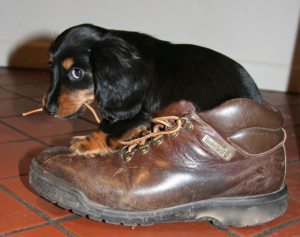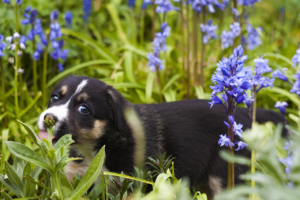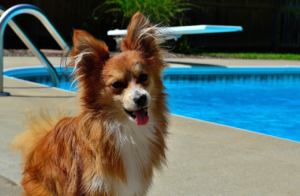How to Puppy-Proof Your Home

Bringing home a new pet can be a lot of work. Even before you pick up your new best friend, you must prepare for their arrival. This means shopping for pet food, buying new toys, a dog bed, and checking the fence around your yard for holes (just in case!) Caring for any animal is a big responsibility, but when it comes to getting a new puppy, there’re even more things you need to do to get ready.
Puppies are naturally curious, full of energy, and very good at getting into things they shouldn’t. Keeping this in mind, you should always do a careful sweep of your home and yard (and garden, if you have one) to make sure that there’s nothing around that might harm your new pet. And this is important: you should always do this check before bringing a new pet into your house!
When puppy-proofing your house, the first thing you should do is get down on your puppy’s level. I mean this literally—nothing beats getting down on your hands and knees and looking at the world as your pet sees it. If you’re looking at things through a puppy’s eyes, it’ll help you identify many of these potential dangers:
Dangerous foods
 Most people know that foods like chocolate, chicken bones, and onions are bad for dogs. But because puppies like to chew or swallow whatever they can sink their teeth into, you should hide or remove absolutely everything that might be harmful. This includes alcohol, avocados, anything with caffeine, grapes, macadamia nuts, foods with fake sugar (or any sugar!), and fruits that have pits, such as peaches or plums. Because some dogs might have allergies or react badly to certain foods, it’s better to just lock up your pantry than to try to keep your new puppy away from it. Never leave foods lying around on the table or counters unsupervised—you might think that they’re out of reach, but dogs can get creative to get what they want!
Most people know that foods like chocolate, chicken bones, and onions are bad for dogs. But because puppies like to chew or swallow whatever they can sink their teeth into, you should hide or remove absolutely everything that might be harmful. This includes alcohol, avocados, anything with caffeine, grapes, macadamia nuts, foods with fake sugar (or any sugar!), and fruits that have pits, such as peaches or plums. Because some dogs might have allergies or react badly to certain foods, it’s better to just lock up your pantry than to try to keep your new puppy away from it. Never leave foods lying around on the table or counters unsupervised—you might think that they’re out of reach, but dogs can get creative to get what they want!
Unlocked doors, stairs, and fences
Just like a human baby, a baby dog needs a safe and secure place to live and grow. This means putting baby gates over stairs, checking for holes in the fence (and repairing any that you might find), and remembering to close doors behind you. Some dogs are clever enough to open doors with handles, so make sure to lock your doors (and your fridge) when you leave a room. My dog, Cisco, learned how to open the door from the garage to the house, and let himself inside to sleep on the couch every night for weeks before we figured out what he was up to!
Swimming pools, ponds, hot tubs, and watering troughs can be very dangerous to pets, especially new puppies. If a puppy falls into a pool and can’t climb back out, they might get tired and drown, even if they’re an excellent swimmer. It’s safer for your new pet to fence off or cover all pools, ponds, lakes, or rivers in your yard. Make sure that any tarps or covers you use are firmly secured, because puppies might walk out on them and get tangled up in the water if they’re not.
Electrical wires and outlets
Puppies love to lick and chew on things. This means that anything with an electrical cord or socket is a potential threat. When puppy-proofing, one of the most important things you can do is get socket covers for all the exposed outlets in your house. Just like curious children might stick their fingers in a socket, a curious puppy might lick an outlet and receive an unpleasant (and dangerous) shock. Also, it’s a good idea to always unplug appliances that aren’t in use. Getting electrical cords with extra-thick plastic sheaths, and checking for exposed wires are too more ways you can protect your pup.
 Common (but dangerous) household items
Common (but dangerous) household items
It’s a good rule of thumb that anything smaller than your hand might pose a threat to your puppy. Especially if you have a bigger puppy that can fit more into their mouth, the sheer number of things that a dog can ingest and get sick from is incredible. String, Legos, ribbons, aluminum foil, plastic bags, wallets, scissors, tools, keys, and condiment bottles are just a few of the many, many things that puppies might mistake for toys or food. Always make sure that your puppy has lots of toys to keep them entertained, so that they don’t go looking for less-safe alternatives.
Valuable and breakable items
Most puppies are playful and excitable by nature. They’re like little kids—they don’t know what to do with all that energy. Unfortunately, casualties of their exuberant romps through the house tend to be decorative or delicate items such as vases, lamps, low-hanging framed pictures, glass figurines, and potted plants. Make sure that all breakable or valuable items are kept well out of reach of your new four-legged friend. In addition to being messy and expensive to replace, broken glass items can pose a serious threat to a playful puppy.
Pesticides, chemicals, and medications
If you suspect your puppy ingested something on this list, the first thing to do is call poison control. Household cleaners, antifreeze, your medications, and any herbicides or pesticides can be deadly to a dog. Make sure to keep your chemical sprays, fertilizers, medications, and chemicals locked away in secure places that dogs can’t reach. Be especially wary of items such as antifreeze and rat poison, which smell enticing and edible to your pet. My dog, Cisco, once ate a restaurant’s rat poison after escaping from the yard, and had to be rushed off the island where we lived on a fire boat to get to a veterinary clinic in time. Aside from being expensive and time consuming, the experience was traumatic for everyone involved.
Mushrooms, garden plants, and house plants
Many common household plants are dangerous to dogs. Most dogs know better than to eat these plants, or have no interest in them, but puppies tend to try everything once. If you have any plants in your garden or home that may pose a threat, either secure or remove them immediately. If you have mushrooms or poisonous plants in your yard or garden, keep your puppy out of the yard until you’ve fenced off those plants or removed them. The Pet Poison Helpline has an excellent list of common household plants that may be dangerous for your dog to ingest.
Have you ever puppy-proofed a house? What did you do to keep your new pet out of trouble? Leave a comment and let us know!


This is all great advice. Another thing we did the we got our puppy was to clean everything with a pet friendly cleanser. We had our carpets cleaned with a green cleaner and scrubbed the walls and wood floors with a green cleaner as well. Our dog spends a lot of time indoors, and we didn’t want him to accidentally ingest anything poisonous that we had used to clean our home before. I don’t know if it was necessary, but it gave us peace of mind.